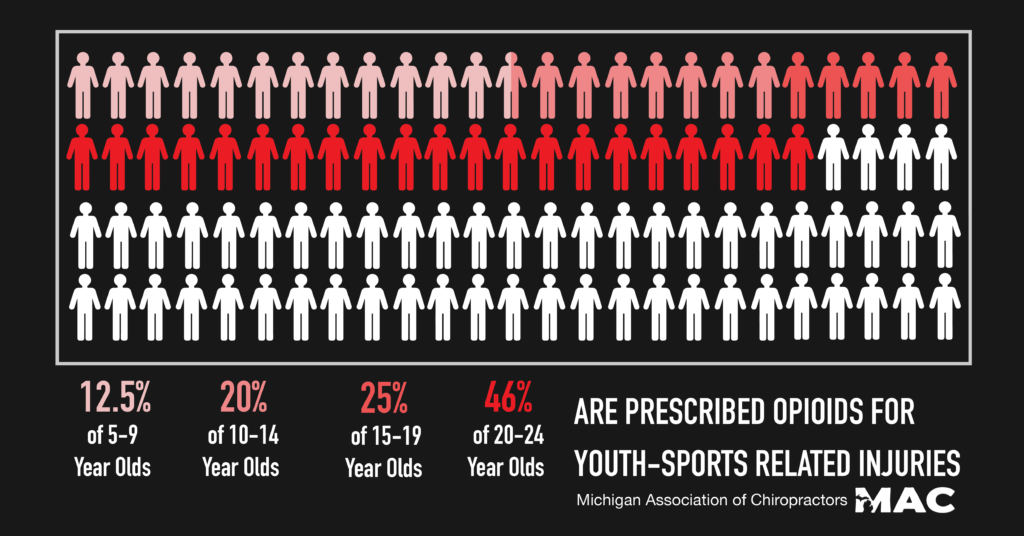
Share Now:
Opioids prescribed to 1 in 4 patients under 24 seeking ER treatment for sports-related injuries
By John Delehanty, CR News Science Writer
Opioid abuse in the United States is of epidemic proportions and overprescription of opioids is a contributing factor. Exacerbating the problem of overprescription is the demographics for whom opioids are being prescribed.
Younger patients seeking medical treatment can be particularly vulnerable to the addictive quality of opioids. Brain development continues until around the age of 25, meaning children and young adults can be even more vulnerable to opioid addiction. Studies show that even with prevailing public awareness of the dangers of opioid addiction, opioid use among adolescents and young adults in the US is among the highest in the world.
Part of the issue is the rate at which children and young adults seek treatment for sports and recreation related injuries. Children and young adults account for the overwhelming majority of sports- and recreation-related emergency room visits: over 70% of all such ER visitors are between the ages of 5 and 24.
One in eight children ages 5 through 9 seeking emergency room treatment for a sports-related injury are prescribed an opioid painkiller. Children ages 10 to 14 are given opioids in 1 of 5 ER visits. Nearly half of all patients seeking sports-related injury treatment receive opioid-based pain management when the age range includes young adults (ages 5 to 24).
| Age Range | Percentage Prescribed Opiate Painkiller |
| 5-9 | 12.5% |
| 10-14 | 20% |
| 15-19 | 25% |
| 20-24 | 46% |
While about half of all youth and young adults acquire their drugs illegally, there remains a considerable percentage that get them through legal prescriptions. In addressing the spread of opioid abuse in the U.S., public awareness of the sources of opioid addiction from must be strengthened. Cracking down on criminal drug proliferation is only one method by which to address this crisis.
The vulnerability of younger ER patients to the highly addictive opioids poses a specific and pervasive threat to their general and ongoing well-being. A more conservative approach to pain management, particularly with regards to youth and young adult pharmaceutical intervention, must also be explored if a comprehensively effective solution is to be found.
Sources:
Emergency Department Visits for Sports- and Recreation-Related Traumatic Brain Injuries Among Children – United States, 2010–2016. (2019, March 14). Retrieved from https://www.cdc.gov/mmwr/volumes/68/wr/mm6810a2.htm.
Understanding the Teen Brain . (n.d.). Retrieved from https://www.urmc.rochester.edu/encyclopedia/content.aspx?ContentTypeID=1&ContentID=3051
DeMio, T. (2019, November 15). 1 of 4 US youths hurt in sports gets opioids at the ER, CDC report says. Retrieved from https://www.cincinnati.com/story/news/2019/11/15/25-percent-american-youths-hurt-sports-gets-opioids-emergency-room-cdc-says/2574260001/.

